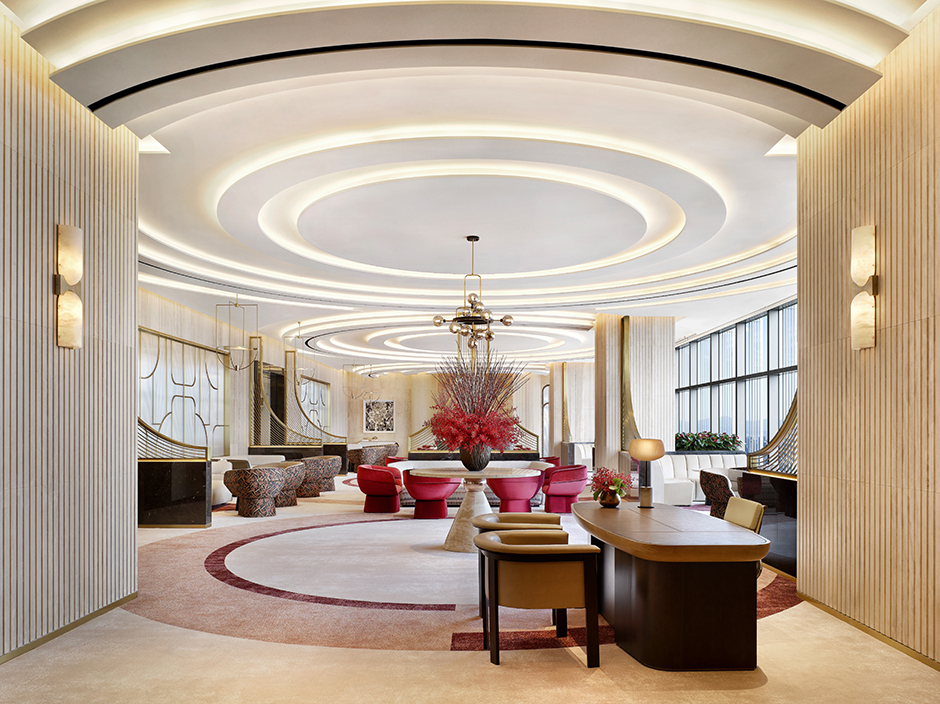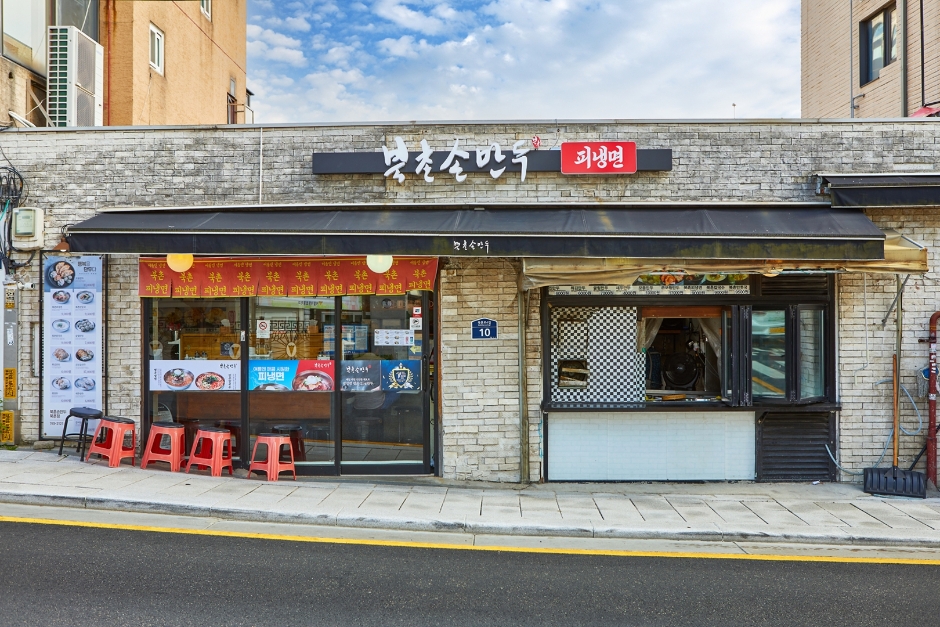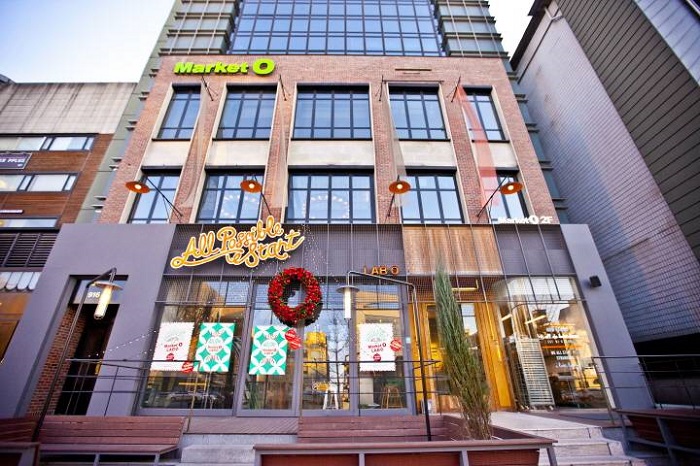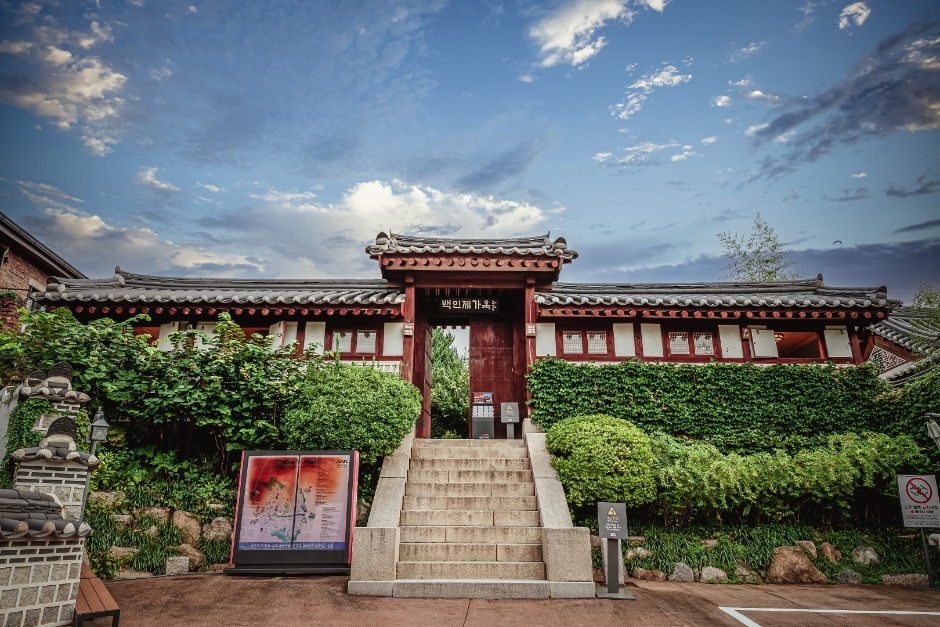Ramada Hotel Dongdaemun (라마다호텔 동대문)
14.2Km 2021-06-15
354, Dongho-ro, Jung-gu, Seoul
+82-2-2276-3500
Ramada Hotel Dongdaemun is a business hotel located in the heart of Seoul. It is located within a short walking distance from Dongdaemun History & Culture Park with many of Dongdaemun's major shopping centers close by. The hotel offers a conference room that can accommodate up to 20 people and a business center that caters to guests who are on a business trip. Guests can also take advantage of free Wi-Fi from their room.
Hanilkwan Apgujeong (한일관 압구정점)
14.2Km 2024-03-20
14 Apgujeong-ro 38-gil, Gangnam-gu, Seoul
Originally opened in Pimatgol Alley (a narrow alley connecting the two main roads of Jongno and Namdaemun-ro, which was frequented by horse riders during the Joseon period) in 1939, Hanilkwan is said to be the originator of Seoul-style bulgogi and has featured multiple times in Michelin Guides. It relocated to Apgujeong when Pimatgol Alley underwent redevelopment. Aside from its main branch at Apgujeong, it also has branches in Yeongdeungpo, Euljiro, Gwanghwamun Gate, and Hanam, Gyeonggi-do. Unlike the more conventional grilled bulgogi, which grills marinated meat on fire, bulgogi here is Seoul-style bulgogi served as a hot pot-like dish. The restaurant also serves other menus like Seoul-style cold buckwheat noodles, galbi soup, and mung bean pancakes.
Josun Palace Seoul Gangnam, Luxury Collection Hotel (조선 팰리스 서울 강남, 럭셔리 컬렉션 호텔)
14.2Km 2022-06-09
231 , Teheran-ro, Gangnam-gu, Seoul
Josun Palace Seoul Gangnam, Luxury Collection Hotel is Josun Hotel and Resort's most luxurious brand hotel and embodies the 100-year history of Josun Hotel. In addition, this is Korea's first Luxury Collection Hotel in collaboration with Marriott International. The hotel building goes from basement level 6 to 36 levels and houses 254 rooms with panorama views and a skyline view of the city. There are 9 room types and include brand amenity products, an air dresser, and capsule coffee machine. Facilities include various restaurants, lounge & bar, and Josun Deli. There are also banquet halls, a swimming pool, and fitness center.
Eunjujeong (은주정)
14.2Km 2024-03-12
32, Changgyeonggung-ro 8-gil, Jung-gu, Seoul
+82-2-2265-4669
Situated near Gwangjang Market, Eunjujeong focuses on kimchi jjigae. Served wrapped in lettuce, it offers a unique delicacy. They also sell barbecued pork belly, which is grilled in the traditional Korean style. After finishig the meal, it's recommended to take a walk along Cheonggyecheon Stream right in front of the restaurant. Across Cheonggyecheon Stream is Gwangjang Market, which is also worth exploring, enriching the experience of the area.
Bukchon Son Mandu Bukchon Branch (북촌손만두 북촌점)
14.2Km 2024-12-10
This third-generation family-owned handmade mandu restaurant has been in business since 1953. Its handmade mandu bears the tradition of nearly 70 years. This restaurant distinguishes itself above others with its unique expertise in the art of mandu-making and fresh ingredients, capturing deep flavors with care in each mandu. A full spread of mandu is available here, from steamed mandu to thin-skin mandu, deep-fried mandu, shrimp mandu, and galbi mandu, which can be ordered in individual pieces or as an assorted package. Mandu and noodles go perfectly together, and here, visitors can enjoy mandu with cold buckwheat noodles or noodle soup. The most recommended menu is the noodle soup, which serves thick, plump noodles in warm broth. But that does not mean that the cold buckwheat noodles are lacking: cold buckwheat noodles are served in a cool, red kimchi broth.
Rawrow - Kwangjang Market Branch [Tax Refund Shop] (로우로우 광장시장)
14.2Km 2024-04-19
Store #239, Gwangjang Market, 88, Changgyeonggung-ro, Jongno-gu, Seoul
-
Cheongun Literature Library (청운문학도서관)
14.2Km 2023-08-16
40 , Jahamun-ro 36-gil, Jongno-gu, Seoul
Cheongun Literature Library is located at the foot of Inwangsan Mountain and can be reached by following the mountain's walking trail starting from Changuimun Gate along the fortress wall. This public hanok library is designed in consideration of the sloped topography and the natural scenery of Inwangsan Mountain. The library consists of two floors: an underground floor and a ground floor. While the ground floor is designed as a traditional hanok, the underground floor is made of concrete to support the hanok building and the spacious outdoor yard. By implementing the natural slope in the library's design, the underground southern entrance is exposed, allowing sunlight to enter. The underground floor features a wide collection of books while the ground floor serves as a place for reading. The natural environment surrounding the library adds to the hanok building's traditional and peaceful charms.
Market O - Apgujeong Branch (마켓오 압구정)
14.2Km 2021-03-29
310, Dosan-daero, Gangnam-gu, Seoul
+82-2-515-0105
It is a good restaurant not only for meals but also for gatherings. This Western dishes restaurant is located in Gangnam-gu, Seoul. The representative menu is steak.
Baek In-je House (백인제가옥)
14.2Km 2024-10-15
16 Bukchon-ro 7-gil, Jongno-gu, Seoul
+82-2-724-0200
Baek In-je House, located in Bukchon Hanok Village, is a hanok built during the Japanese administration period that portrays modern hanok features. The structure consists of a main room offering a good view of the whole village, spacious bedrooms, a large garden, and annex buildings. As it maintains the beauty of a traditional hanok while incorporating the modern trend of its time, Baek In-je House is considered to be highly valuable in means of both architecture and history, representing the Bukchon Hanok Village together with Yun Bo-seon House.
Baek In-je House was built from black pine, which was first introduced in Seoul during the Gyeongseong Expo in 1907, distinguishing itself from other upper-class houses of its time. Unlike other traditional hanok designs that separate the main building from the other rooms, Baek In-je House connects the two with a hallway, allowing convenient access between the two structures. The house also consists of a Japanese-style hallway and floor mat rooms, reflecting the interior trends of that period. Baek In-je House is also unique in that the main room is partially built as a two-story structure, a style that was never seen in any traditional hanok built during the Joseon period.




![Rawrow - Kwangjang Market Branch [Tax Refund Shop] (로우로우 광장시장)](http://tong.visitkorea.or.kr/cms/resource/29/2878229_image2_1.jpg)


 English
English
 한국어
한국어 日本語
日本語 中文(简体)
中文(简体) Deutsch
Deutsch Français
Français Español
Español Русский
Русский